2012 Year in Review
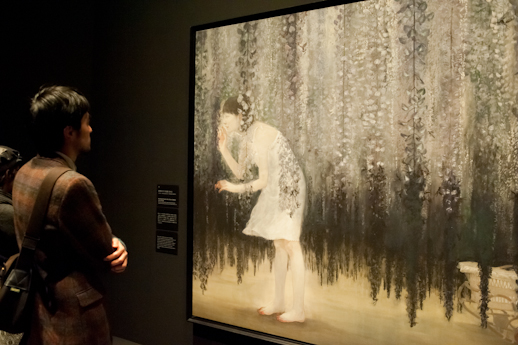
The year began with two major solo exhibitions; one from Fuyuko Matsui at the Yokohama Museum of Art, and another from Lee Bul at the Mori Art Museum. At the Metropolitan Museum of Photography, another understated “Yebisu International Festival for Art and Alternative Visions” (a.k.a. “Yebizo”) featured an interesting collection of artists who use technology in their art-making. As always, the show included some epic video art experiences.
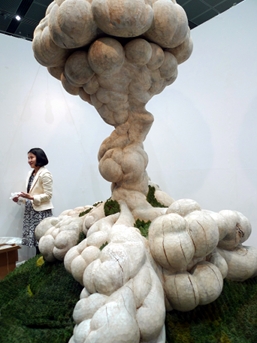
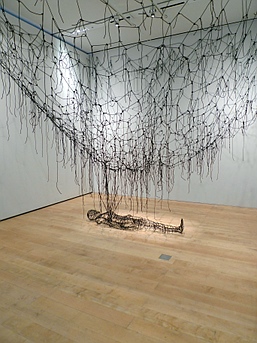
Art Fair Tokyo was bigger—and, in some people’s opinions, better— this year, taking up about twice as much space in Tokyo International Forum’s main exhibition hall than in previous events. The young contemporary galleries, instead of having their own annex, shared space with the rest of the stalls. “Explore Asia” was a section in which museums such as China’s Ullens Centre for Contemporary Art and Mori Art Museum could show their commercial sides by selling limited edition prints and licensed merchandise. Also in the world of art fairs, Tokyo Frontline returned to 3331 Arts Chiyoda, G-Tokyo repeated its “less is more” approach at the Mori Arts Centre Gallery (see TABlog’s photo report for both of these events) and Tokyo Photo (photo report) drew a crowd at Tokyo Midtown.
The one-off Trans Arts Tokyo festival took over the soon-to-be-demolished Tokyo Denki University building in Kanda. Masato Nakamura, the artist and art producer who created 3331 Arts Chiyoda, organised the project with Tokyo University of the Arts and the Kanda Community Art Centre. It featured an exhausting amount of rooms used as temporary art galleries and studios that filled all 17 floors plus the basement.
Although it was canceled among the uncertainties of post-March 11 last year, Roppongi Art Night returned this year and lit up the (already rather bright) neighborhood with giant inflatable sculptures by Yayoi Kusama and a bus tour by Ichiro Endo, among many other performances and installations.
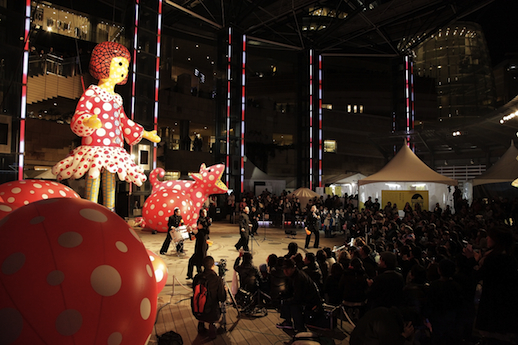
Naturally, the tragedies of March 2011 still loom large in many people’s minds, including artists and curators. Many exhibitions are still measured by their relevance to these events and some are even starting to respond directly to last year’s events. Art Tower Mito held what was so far the largest exhibition of art after the earthquake, “Art and Disaster—Documentation in Progress”. It was a well-meaning attempt at capturing some kind of representation of what is an overwhelmingly wide spectrum of post-earthquake art. Many artists included in the show weren’t actually artists; many art works included in the show weren’t actually art. It was an intriguing approach to a theme which indicated that many artists and exhibition makers were left questioning the “purpose” of art after this major trauma.
“Turning Around” was an exhibition of political art curated by Japanese art group Chim↑Pom. A matter of weeks before the world knew the name of the Russian feminist punk group, Pussy Riot, the group’s other manifestation, Voina, had a large part of the floor at Watarium, alongside works and documentations by other Japanese and international artists/activists. ChimPom included their Shibuya rats as well as more recent, Fukushima-inspired stunts. Barnaby Lambert reviewed the exhibition for TABlog. 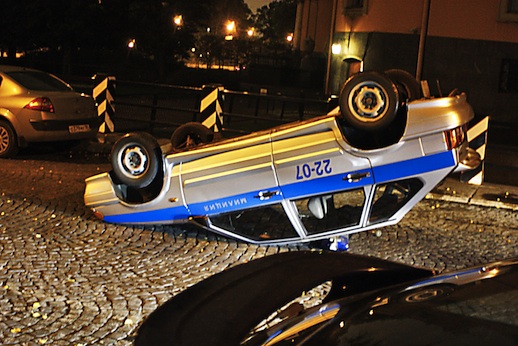
While this is by no means a definitive list, some other notable exhibitions this year were the large-scale Gutai retrospective at The National Art Centre, Tokyo (the first one for this post-war Kansai art group held in this city). Jessica Jane Howard reviewed the exhibition for TABlog. Another major event for local artists was the first major Japan solo show for Makoto Aida, “Monument for Nothing,” held at the Mori Art Museum. Tracy Jones wrote about it for TABlog. However, the most popular exhibition by far for many of TAB’s followers was legendary manga author and animator Katsuhiro Otomo’s display of manga manuscripts as well as Akira‘s famous and highly-coveted red jacket and motorcycle. TABlog’s review was done by Paul Heaton. 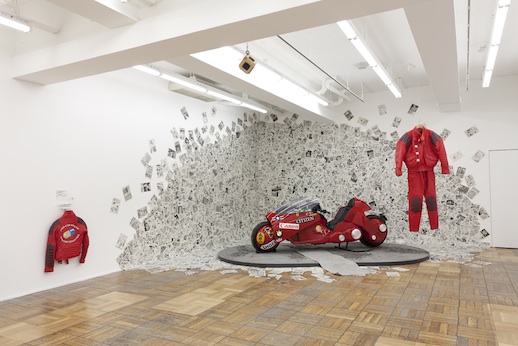
Looking ahead to 2013, Japan will see in two major art triennials. The second Aichi Triennale, this time under the curatorship of former Tokyo Opera City Art Gallery curator Shihoko Iida, will take place across Nagoya and its surrounds from August. Meanwhile, the second Art Setouchi, happening across the islands of the Seto Inland Sea, will tempt art-goers even further outside of Tokyo. This time, the Setouchi festival program will be held in three different stages—one in spring, one in summer, and another in autumn.
Tokyo Art Beat thanks all its readers for their support in 2012 and wishes everyone a safe and happy new year.
Emily Wakeling
Emily Wakeling



